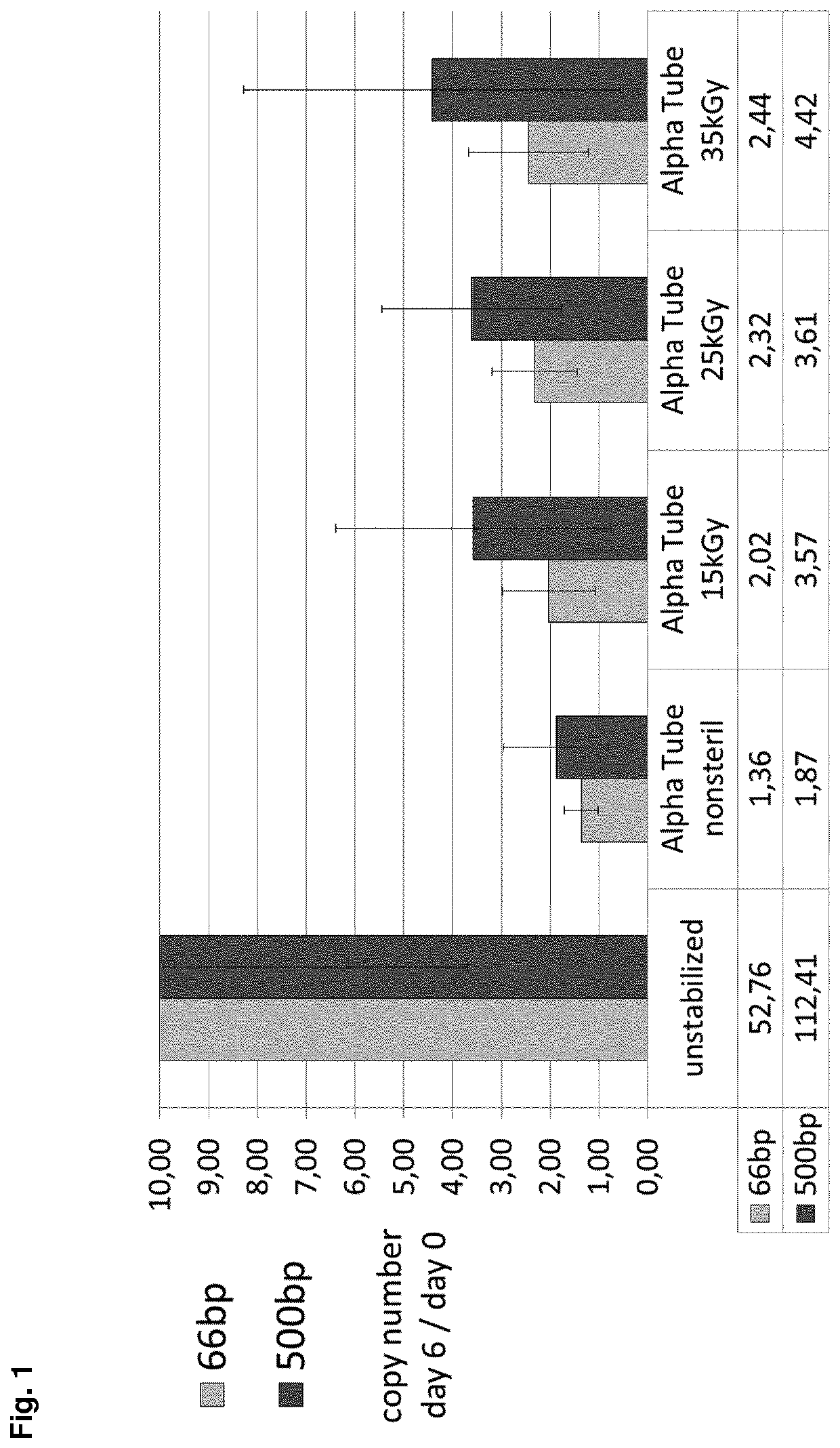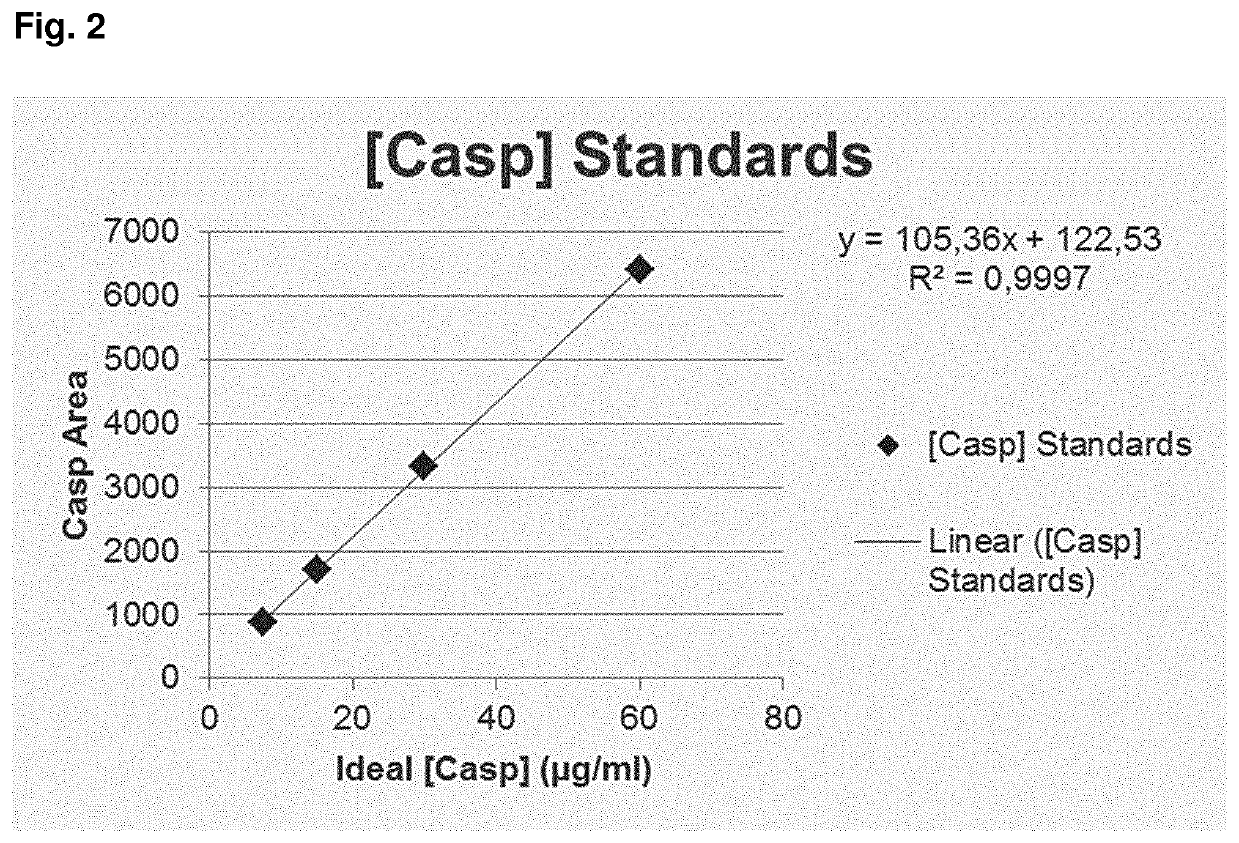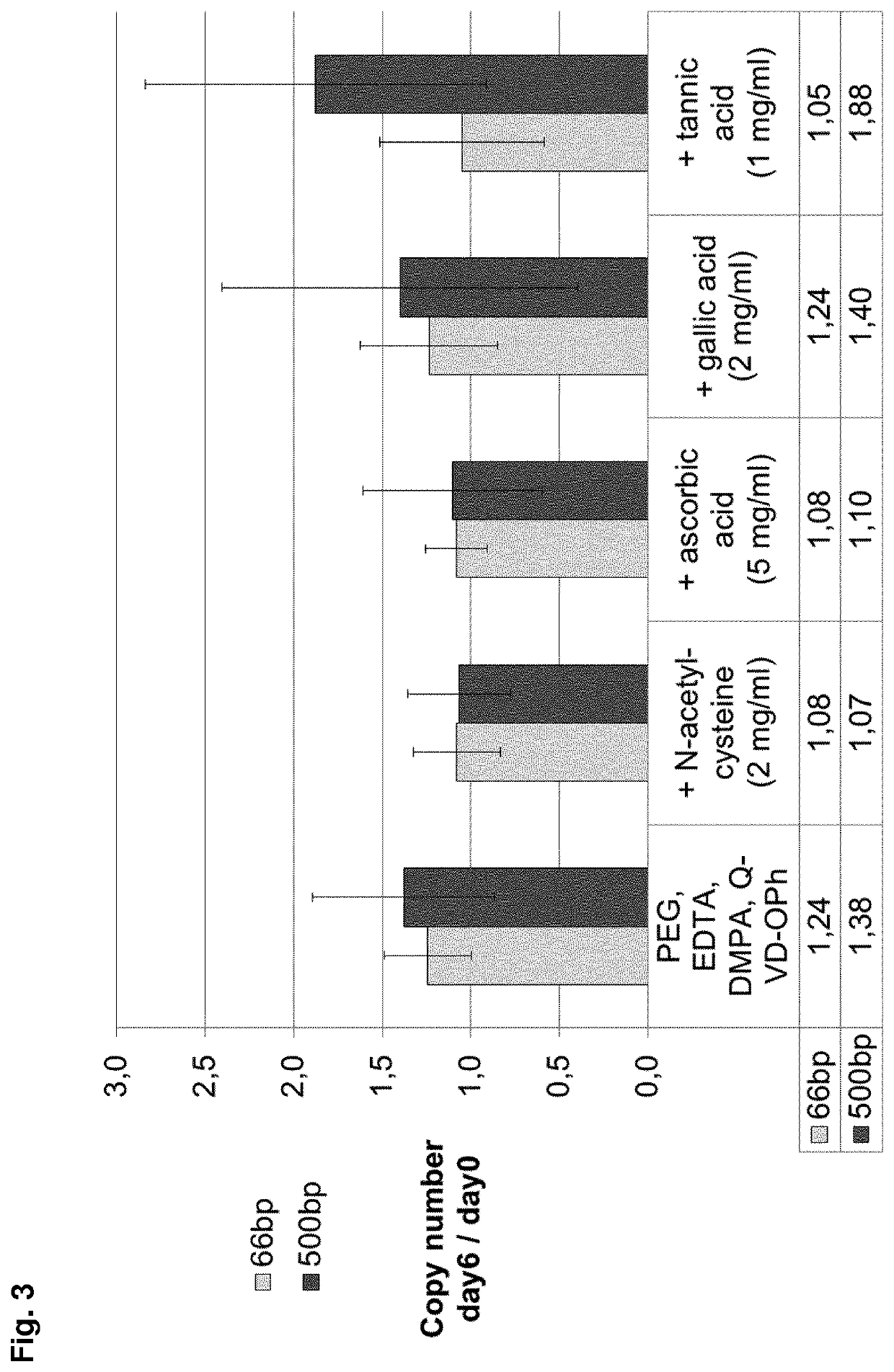Method of preparing sterilized compositions for stabilization of extracellular nucleic acids
a technology of compositions and nucleic acids, applied in the field of preparation of sterilized compositions for stabilizing extracellular nucleic acids, can solve the problems of difficult analysis of the analysis results, cell-free nucleic acids (cfna), and concentration challenges, so as to improve the storage properties of the stabilization composition, reduce hemolysis, and facilitate homogeneous admixing
- Summary
- Abstract
- Description
- Claims
- Application Information
AI Technical Summary
Benefits of technology
Problems solved by technology
Method used
Image
Examples
example 1
1. Effect of Gamma Irradiation on ccfDNA Stabilization
[0696]PAXgene Blood ccfDNA Alpha tubes were produced and sterilized by gamma irradiation with different energy levels. Samples of 10 ml whole blood from eight donors were collected in 10 ml spray dry K2EDTA tubes (non-stabilized controls) and in PAXgene Blood ccfDNA Alpha tubes. Plasma was generated from 5 ml of stabilized or non-stabilized blood samples directly after blood draw. Residual blood was stored for additional 6 days at room temperature before plasma generation. ccfDNA was purified manually from 2 ml plasma, copy numbers of 18S rDNA gene were determined in triplicates by real time PCR.
[0697]The stabilization reagent mixture according to PCT / EP2015 / 055699 (for one Alpha tube) was: 11.45 μl caspase inhibitor (Q-VD-OPh; 1 mg dissolved in 388 μl DMSO); the reagent further comprised PEG10.000, PEG300, EDTA and DMPA, water ad 1.7 ml. After addition of whole blood, the Alpha tubes comprised Q-VD-OPh at a final concentration ...
example 2
2. Degradation of Caspase Inhibitor by Gamma Irradiation
[0702]PAXgene Blood ccfDNA Alpha tubes were produced and sterilized with different energy levels by gamma irradiation. For quantification by HPLC, a standard curve was generated for caspase inhibitor (Q-VD-OPh) dissolved in DMSO only. The standard curve generated is shown in FIG. 2. Table 2 (below) indicates the concentrations of caspase inhibitor as well as peak area and retention times for the different concentrations of caspase inhibitor.
[0703]
TABLE 2Results of HPLC analysis; preparation of standard curve.Caspase inhibitorRetention time[Caspase inhibitor]StandardArea(min)(μg / ml)Level 1 (7.5 μg / ml)877.891126.24417.6628Level 2 (15 μg / ml)1708.663326.260515.4100Level 3 (30 μg / ml)3335.847226.337330.6098Level 4 (60 μg / ml)6420.958026.387359.5803
[0704]As a next step, stabilization reagents from Alpha tubes were measured before and after irradiation, in order to determine the concentrations of caspase inhibitor. Unique peaks for cas...
example 3
3. Effect of Addition of Scavengers on ccfDNA Stabilization
[0713]In order to prevent degradation of caspase inhibitor during sterilization by gamma irradiation, components where tested for their ability to protect the caspase inhibitor from degradation during irradiation. To exclude that the additional components themselves have a negative impact on the level of extracellular nucleic acid, these compounds were added to stabilizing reagents comprising a caspase inhibitor (Q-VD-OPh) and further comprising PEG, EDTA and DMPA, and tested in functional assays.
[0714]Samples of 10 ml whole blood from eight donors were collected in 10 ml spray dry K2EDTA tubes. Directly after blood draw, non-stabilized blood samples were stabilized by addition of 1.7 ml of a ccfDNA stabilization reagent according to PCT / EP2015 / 055699 with or without addition of the different compounds tested for their impact on extracellular nucleic acid stabilization.
[0715]The stabilization reagent comprised (for 10 ml K2...
PUM
| Property | Measurement | Unit |
|---|---|---|
| concentration | aaaaa | aaaaa |
| concentration | aaaaa | aaaaa |
| concentration | aaaaa | aaaaa |
Abstract
Description
Claims
Application Information
 Login to View More
Login to View More - R&D
- Intellectual Property
- Life Sciences
- Materials
- Tech Scout
- Unparalleled Data Quality
- Higher Quality Content
- 60% Fewer Hallucinations
Browse by: Latest US Patents, China's latest patents, Technical Efficacy Thesaurus, Application Domain, Technology Topic, Popular Technical Reports.
© 2025 PatSnap. All rights reserved.Legal|Privacy policy|Modern Slavery Act Transparency Statement|Sitemap|About US| Contact US: help@patsnap.com



